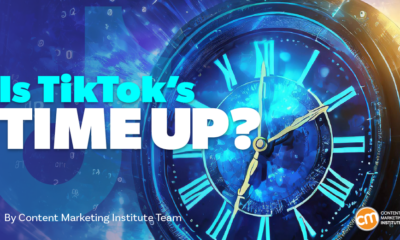The new app is called watchGPT and as I tipped off already, it gives you access to ChatGPT from your Apple Watch. Now the $10,000 question (or more accurately the $3.99 question, as that is the one-time cost of the app) is why having ChatGPT on your wrist is remotely necessary, so let’s dive into what exactly the app can do.
NEWS
TikTok hit with consumer, child safety and privacy complaints in Europe
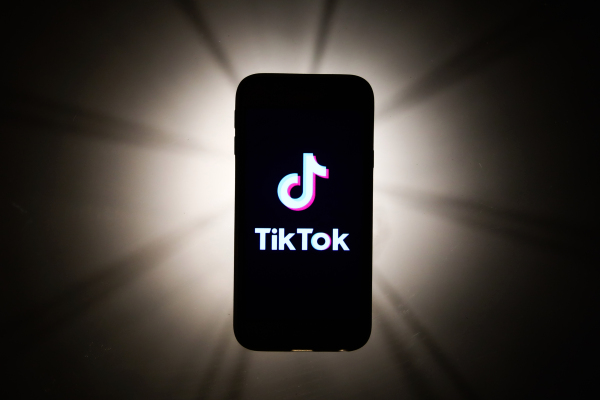
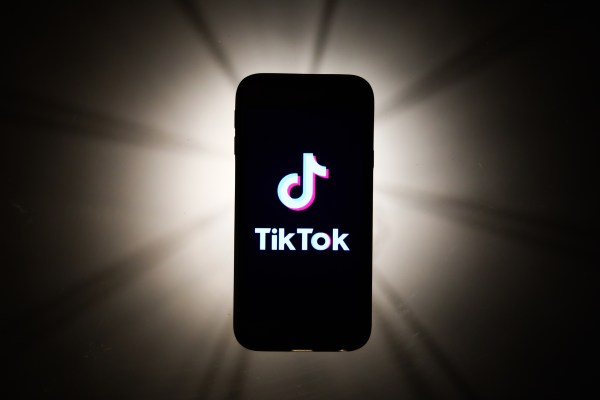
TikTok is facing a fresh round of regulatory complaints in Europe where consumer protection groups have filed a series of coordinated complaints alleging multiple breaches of EU law.
The European Consumer Organisation (BEUC) has lodged a complaint against the video sharing site with the European Commission and the bloc’s network of consumer protection authorities, while consumer organisations in 15 countries have alerted their national authorities and urged them to investigate the social media giant’s conduct, BEUC said today.
The complaints include claims of unfair terms, including in relation to copyright and TikTok’s virtual currency; concerns around the type of content children are being exposed to on the platform; and accusations of misleading data processing and privacy practices.
Details of the alleged breaches are set out in two reports associated with the complaints: One covering issues with TikTok’s approach to consumer protection, and another focused on data protection and privacy.
Child safety
On child safety, the report accuses TikTok of failing to protect children and teenagers from hidden advertising and “potentially harmful” content on its platform.
“TikTok’s marketing offers to companies who want to advertise on the app contributes to the proliferation of hidden marketing. Users are for instance triggered to participate in branded hashtag challenges where they are encouraged to create content of specific products. As popular influencers are often the starting point of such challenges the commercial intent is usually masked for users. TikTok is also potentially failing to conduct due diligence when it comes to protecting children from inappropriate content such as videos showing suggestive content which are just a few scrolls away,” the BEUC writes in a press release.
TikTok has already faced a regulatory intervention in Italy this year in response to child safety concerns — in that instance after the death of a ten year old girl in the country. Local media had reported that the child died of asphyxiation after participating in a ‘black out’ challenge on TikTok — triggering the emergency intervention by the DPA.
Soon afterwards TikTok agreed to reissue an age gate to verify the age of every user in Italy, although the check merely asks the user to input a date to confirm their age so seems trivially easy to circumvent.
In the BEUC’s report, the consumer rights group draws attention to TikTok’s flimsy age gate, writing that: “In practice, it is very easy for underage users to register on the platform as the age verification process is very loose and only self-declaratory.”
And while it notes TikTok’s privacy policy claims the service is “not directed at children under the age of 13” the report cites a number of studies that found heavy use of TikTok by children under 13 — with BEUC suggesting that children in fact make up “a very big part” of TikTok’s user base.
From the report:
In France, 45% of children below 13 have indicated using the app. In the United Kingdom, a 2020 study from the Office for Telecommunications (OFCOM) revealed that 50% of children between eight and 15 upload videos on TikTok at least weekly. In Czech Republic, a 2019 study found out that TikTok is very popular among children aged 11-12. In Norway, a news article reported that 32% of children aged 10-11 used TikTok in 2019. In the United States, The New York Times revealed that more than one-third of daily TikTok users are 14 or younger, and many videos seem to come from children who are below 13. The fact that many underage users are active on the platform does not come as a surprise as recent studies have shown that, on average, a majority of children owns mobile phones earlier and earlier (for example, by the age of seven in the UK).
A recent EU-backed study also found that age checks on popular social media platforms are “basically ineffective” as they can be circumvented by children of all ages simply by lying about their age.
Terms of use
Another issue raised by the complaints centers on a claim of unfair terms of use — including in relation to copyright, with BEUC noting that TikTok’s T&Cs give it an “irrevocable right to use, distribute and reproduce the videos published by users, without remuneration”.
A virtual currency feature it offers is also highlighted as problematic in consumer rights terms.
TikTok lets users purchase digital coins which they can use to buy virtual gifts for other users (which can in turn be converted by the user back to fiat). But BEUC says its ‘Virtual Item Policy’ contains “unfair terms and misleading practices” — pointing to how it claims an “absolute right” to modify the exchange rate between the coins and the gifts, thereby “potentially skewing the financial transaction in its own favour”.
While TikTok displays the price to buy packs of its virtual coins there is no clarity over the process it applies for the conversion of these gifts into in-app diamonds (which the gift-receiving user can choose to redeem for actual money, remitted to them via PayPal or another third party payment processing tool).
“The amount of the final monetary compensation that is ultimately earned by the content provider remains obscure,” BEUC writes in the report, adding: “According to TikTok, the compensation is calculated ‘based on various factors including the number of diamonds that the user has accrued’… TikTok does not indicate how much the app retains when content providers decide to convert their diamonds into cash.”
“Playful at a first glance, TikTok’s Virtual Item Policy is highly problematic from the point of view of consumer rights,” it adds.
Privacy
On data protection and privacy, the social media platform is also accused of a whole litany of “misleading” practices — including (again) in relation to children. Here the complaint accuses TikTok of failing to clearly inform users about what personal data is collected, for what purpose, and for what legal reason — as is required under Europe’s General Data Protection Regulation (GDPR).
Other issues flagged in the report include the lack of any opt-out from personal data being processed for advertising (aka ‘forced consent’ — something tech giants like Facebook and Google have also been accused); the lack of explicit consent for processing sensitive personal data (which has special protections under GDPR); and an absence of security and data protection by design, among other issues.
We’ve reached out to the Irish Data Protection Commission (DPC), which is TikTok’s lead supervisor for data protection issues in the EU, about the complaint and will update this report with any response.
France’s data watchdog, the CNIL, already opened an investigation into TikTok last year — prior to the company shifting its regional legal base to Ireland (meaning data protection complaints must now be funnelled through the Irish DPC as a result of via the GDPR’s one-stop-shop mechanism — adding to the regulatory backlog).
Jef Ausloos, a postdoc researcher who worked on the legal analysis of TikTok’s privacy policy for the data protection complaints, told TechCrunch researchers had been ready to file data protection complaints a year ago — at a time when the platform had no age check at all — but it suddenly made major changes to how it operates.
Ausloos suggests such sudden massive shifts are a deliberate tactic to evade regulatory scrutiny of data-exploiting practices — as “constant flux” can have the effect of derailing and/or resetting research work being undertaken to build a case for enforcement — also pointing out that resource-strapped regulators may be reluctant to bring cases against companies ‘after the fact’ (i.e. if they’ve since changed a practice).
The upshot of breaches that iterate is that repeat violations of the law may never be enforced.
It’s also true that a frequent refrain of platforms at the point of being called out (or called up) on specific business practices is to claim they’ve since changed how they operate — seeking to use that a defence to limit the impact of regulatory enforcement or indeed a legal ruling. (Aka: ‘Move fast and break regulatory accountability’.)
Nonetheless, Ausloos says the complainants’ hope now is that the two years of documentation undertaken on the TikTok case will help DPAs build cases.
Commenting on the complaints in a statement, Monique Goyens, DG of BEUC, said: “In just a few years, TikTok has become one of the most popular social media apps with millions of users across Europe. But TikTok is letting its users down by breaching their rights on a massive scale. We have discovered a whole series of consumer rights infringements and therefore filed a complaint against TikTok.
“Children love TikTok but the company fails to keep them protected. We do not want our youngest ones to be exposed to pervasive hidden advertising and unknowingly turned into billboards when they are just trying to have fun.
“Together with our members — consumer groups from across Europe — we urge authorities to take swift action. They must act now to make sure TikTok is a place where consumers, especially children, can enjoy themselves without being deprived of their rights.”
Reached for comment on the complaints, a TikTok spokesperson told us:
Keeping our community safe, especially our younger users, and complying with the laws where we operate are responsibilities we take incredibly seriously. Every day we work hard to protect our community which is why we have taken a range of major steps, including making all accounts belonging to users under 16 private by default. We’ve also developed an in-app summary of our Privacy Policy with vocabulary and a tone of voice that makes it easier for teens to understand our approach to privacy. We’re always open to hearing how we can improve, and we have contacted BEUC as we would welcome a meeting to listen to their concerns.
Update: A Commission spokesperson confirmed it has received BEUC’s alert.
“Consumer rights have to be equally well protected — online and offline. The Commission reaffirmed this also with its New Consumer Agenda, presented at the end of last year,” the spokesperson said, adding: “The European Commission will carefully consider all the elements brought forward by BEUC together with the national consumer authorities in the coming weeks to assess the need for further investigation into the matter.”
Facebook Faces Yet Another Outage: Platform Encounters Technical Issues Again
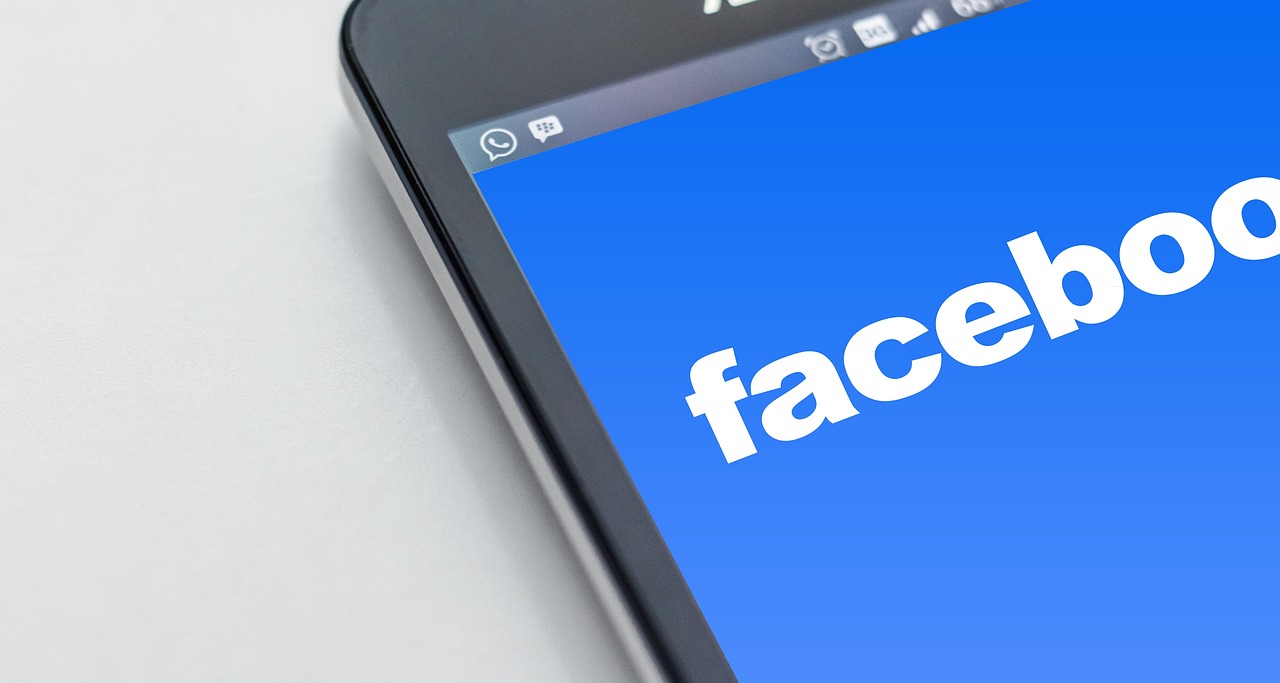
Uppdated: It seems that today’s issues with Facebook haven’t affected as many users as the last time. A smaller group of people appears to be impacted this time around, which is a relief compared to the larger incident before. Nevertheless, it’s still frustrating for those affected, and hopefully, the issues will be resolved soon by the Facebook team.
Facebook had another problem today (March 20, 2024). According to Downdetector, a website that shows when other websites are not working, many people had trouble using Facebook.
This isn’t the first time Facebook has had issues. Just a little while ago, there was another problem that stopped people from using the site. Today, when people tried to use Facebook, it didn’t work like it should. People couldn’t see their friends’ posts, and sometimes the website wouldn’t even load.
Downdetector, which watches out for problems on websites, showed that lots of people were having trouble with Facebook. People from all over the world said they couldn’t use the site, and they were not happy about it.
When websites like Facebook have problems, it affects a lot of people. It’s not just about not being able to see posts or chat with friends. It can also impact businesses that use Facebook to reach customers.
Since Facebook owns Messenger and Instagram, the problems with Facebook also meant that people had trouble using these apps. It made the situation even more frustrating for many users, who rely on these apps to stay connected with others.
During this recent problem, one thing is obvious: the internet is always changing, and even big websites like Facebook can have problems. While people wait for Facebook to fix the issue, it shows us how easily things online can go wrong. It’s a good reminder that we should have backup plans for staying connected online, just in case something like this happens again.
NEWS
We asked ChatGPT what will be Google (GOOG) stock price for 2030

Investors who have invested in Alphabet Inc. (NASDAQ: GOOG) stock have reaped significant benefits from the company’s robust financial performance over the last five years. Google’s dominance in the online advertising market has been a key driver of the company’s consistent revenue growth and impressive profit margins.
In addition, Google has expanded its operations into related fields such as cloud computing and artificial intelligence. These areas show great promise as future growth drivers, making them increasingly attractive to investors. Notably, Alphabet’s stock price has been rising due to investor interest in the company’s recent initiatives in the fast-developing field of artificial intelligence (AI), adding generative AI features to Gmail and Google Docs.
However, when it comes to predicting the future pricing of a corporation like Google, there are many factors to consider. With this in mind, Finbold turned to the artificial intelligence tool ChatGPT to suggest a likely pricing range for GOOG stock by 2030. Although the tool was unable to give a definitive price range, it did note the following:
“Over the long term, Google has a track record of strong financial performance and has shown an ability to adapt to changing market conditions. As such, it’s reasonable to expect that Google’s stock price may continue to appreciate over time.”
GOOG stock price prediction
While attempting to estimate the price range of future transactions, it is essential to consider a variety of measures in addition to the AI chat tool, which includes deep learning algorithms and stock market experts.
Finbold collected forecasts provided by CoinPriceForecast, a finance prediction tool that utilizes machine self-learning technology, to anticipate Google stock price by the end of 2030 to compare with ChatGPT’s projection.
According to the most recent long-term estimate, which Finbold obtained on March 20, the price of Google will rise beyond $200 in 2030 and touch $247 by the end of the year, which would indicate a 141% gain from today to the end of the year.
Google has been assigned a recommendation of ‘strong buy’ by the majority of analysts working on Wall Street for a more near-term time frame. Significantly, 36 analysts of the 48 have recommended a “strong buy,” while seven people have advocated a “buy.” The remaining five analysts had given a ‘hold’ rating.
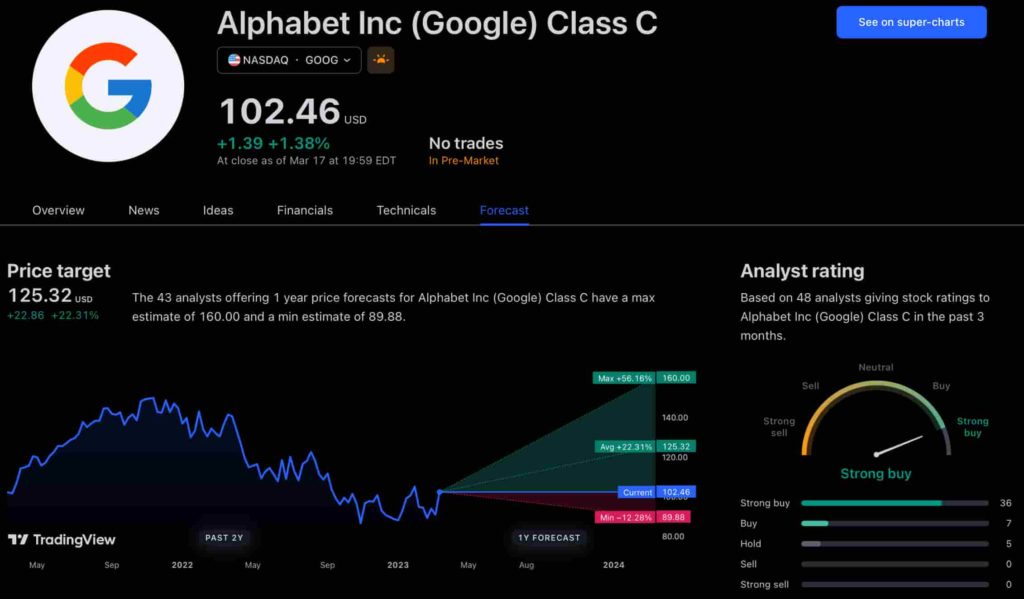
The average price projection for Alphabet stock over the last three months has been $125.32; this objective represents a 22.31% upside from its current price. It’s interesting to note that the maximum price forecast for the next year is $160, representing a gain of 56.16% from the stock’s current price of $102.46.
While the outlook for Google stock may be positive, it’s important to keep in mind that some potential challenges and risks could impact its performance, including competition from ChatGPT itself, which could affect Google’s price.
Disclaimer: The content on this site should not be considered investment advice. Investing is speculative. When investing, your capital is at risk.
NEWS
This Apple Watch app brings ChatGPT to your wrist — here’s why you want it
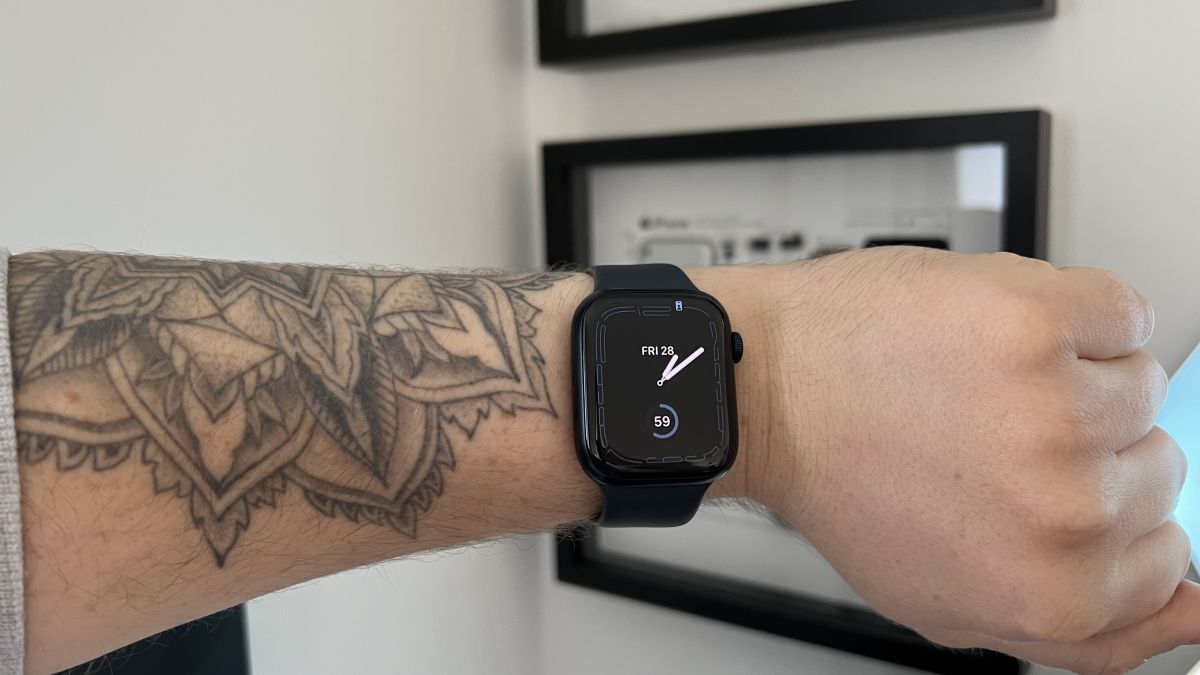
ChatGPT feels like it is everywhere at the moment; the AI-powered tool is rapidly starting to feel like internet connected home devices where you are left wondering if your flower pot really needed Bluetooth. However, after hearing about a new Apple Watch app that brings ChatGPT to your favorite wrist computer, I’m actually convinced this one is worth checking out.
-

 PPC6 days ago
PPC6 days ago19 Best SEO Tools in 2024 (For Every Use Case)
-

 MARKETING7 days ago
MARKETING7 days agoEcommerce evolution: Blurring the lines between B2B and B2C
-
SEARCHENGINES5 days ago
Daily Search Forum Recap: April 19, 2024
-
SEARCHENGINES6 days ago
Daily Search Forum Recap: April 18, 2024
-

 WORDPRESS6 days ago
WORDPRESS6 days agoHow to Make $5000 of Passive Income Every Month in WordPress
-

 SEO7 days ago
SEO7 days ago2024 WordPress Vulnerability Report Shows Errors Sites Keep Making
-

 WORDPRESS6 days ago
WORDPRESS6 days ago10 Amazing WordPress Design Resouces – WordPress.com News
-

 SEO6 days ago
SEO6 days ago25 WordPress Alternatives Best For SEO












